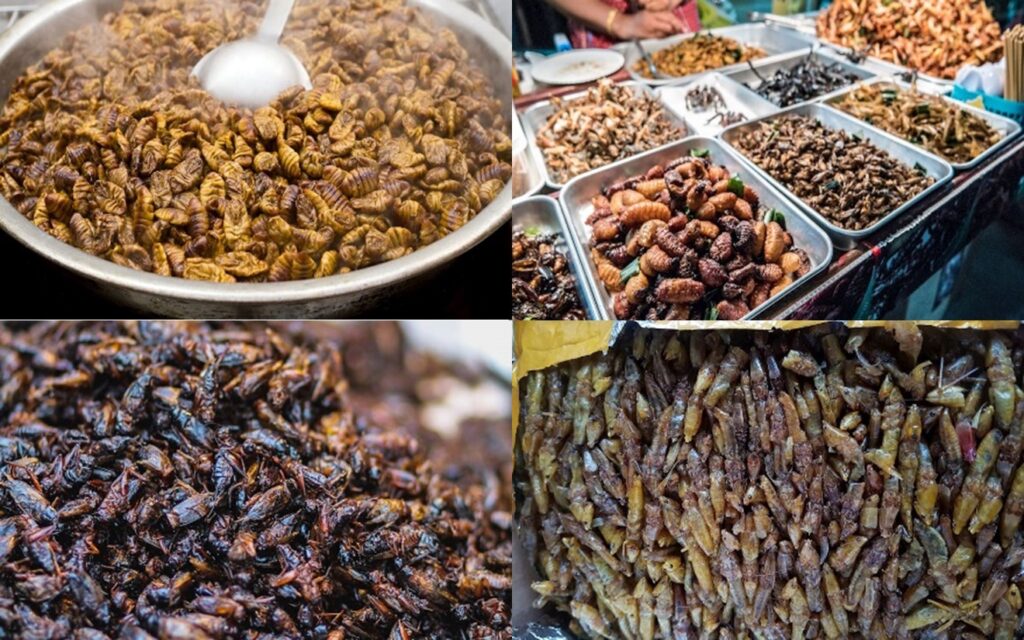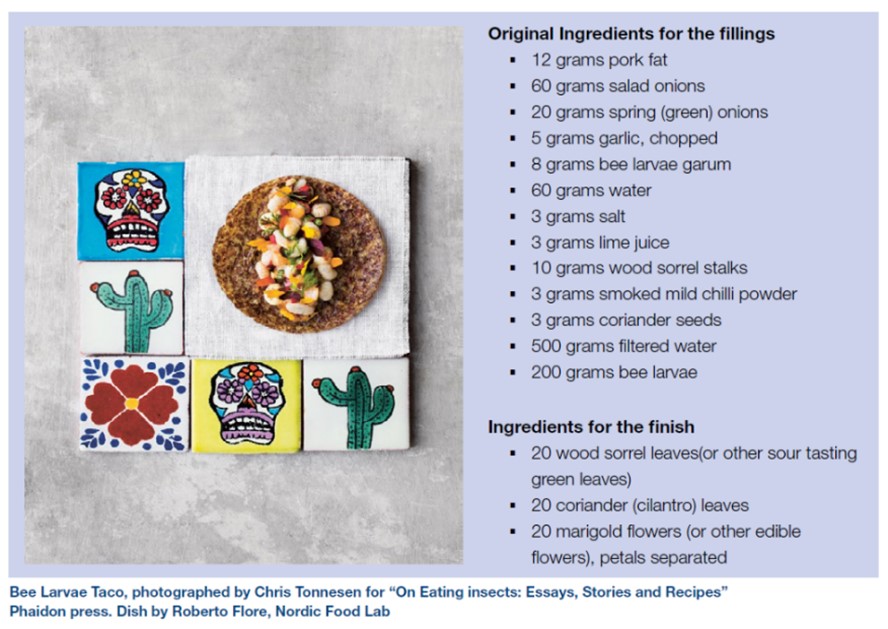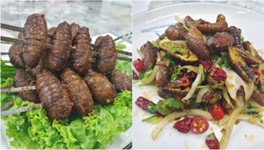What is Entomophagy?

Entomophagy is a terminology that has evolved over the years. It was first used in the 1900s to describe the consumption of insects by other insects. Now, it is typically used to describe the consumption of insects by humans.
This tradition goes way back in Asian, African and some Latin America cultures. Consumption of insects in China started about 3,200 years ago, and as early as 100,000 BCE for South Africans. To date, at least 2,000 species of insects are known to be edible, with beetles dominating the chart.
A misconception about insect consumption is that they are only eaten due to poverty or by primeval people. Recently, edible insects have been gaining attention as a potential source of alternative protein (most have higher protein levels than beef) and are also reported to be more environmentally sustainable (see more on this below). Some species are also high in fibre and minerals.
Insect Farming: A Sustainable Food Source
Other than their nutrition value, insects may be a solution to more sustainable food production and consumption. Firstly, insects have a high feed-to-meat conversion rate, meaning that almost all parts of the insect can be eaten! Additionally, food waste or even manure, which is usually discarded, can be used as a feed source for insects.

For example, a circular ecosystem platform is utilised by Singapore-based start-up Protenga, in which food waste is given to black soldier flies, and is transformed into protein, oil and fertiliser products. These materials are then made into products like pet food, aquafeed and fertiliser.
Especially in space-constrained Singapore, insect farming is suitable as insects generally require low amounts of space, food, and water to grow. Therefore, insects are more climate-friendly than traditional meat sources like cattle and poultry with reports of lower greenhouse gas emissions.
Is it Safe to Eat Insects?
Insects are generally seen as dirty and gross, but to make sure we can safely benefit from this nutritious food source, implementation and regulation of thorough food safety practices is key. It is known that insects, like silkworm and grasshopper, contain various allergens and protein components that could trigger allergic reactions (such as rashes and anaphylactic shock, which could be fatal). Furthermore, insects may also contain toxic substances, or could be contaminated from manure or rotten food.
However, do not let that scare you from trying insects! The prevalence of allergic reactions is low, with 13 cases reported per 100 people. Additionally, with the likely future increase of insect consumption, rigorous research and regulations have been set up to ensure safe consumption by the masses. For example, with the approved sale of insects in Singapore in the latter half of 2023, the Singapore Food Agency (SFA) has come up with a stringent regulatory framework to ensure their safe consumption:

Consumers on Insect Consumption: ‘Yay’ or ‘Nay’?
Although insects are generally nutritious with high protein content, consumers may find them repulsive and dangerous. Due to unfamiliarity, consumers in some parts of the world perceive insect burgers as disgusting, primitive and of lower nutritional value compared to burgers made with animal meat.
As insects have been part of the diet in many Asian cultures, Asians are more likely than Western cultures to accept insects as food. Below shows a list of factors affecting Westerners’ acceptance of insect consumption, where all except one are non-product related factors.
| Non-Product Related Factors | Product-Related Factor |
| Psychological Factors (e.g. Food Neophobia) | Product Characteristics (e.g. Sensory, Degree of Visibility of Insects etc) |
| Familiarity & Past Experiences | |
| Peer & Social Influences | |
| Dietary Preferences |
However, while insect consumption is relatively less frowned upon in Asia, there is still a substantial population that is not accepting of this novel food source. For instance, previous research showed that the feel of disgust, insect phobia and insufficient knowledge level of health benefits of edible insects also influence consumption and purchasing decisions in recruited Chinese consumers.

Order up! Insect Cuisine on the Ground
Consuming whole, unflavoured insects may not be appealing to consumers. To keep up with food trends, Thailand has spiced up the industry by selling insect snacks in enticing flavours such as Tom Yum. In western cuisine, organisations like The Nordic Food Lab also added a twist by incorporating insects into traditional Mexican and Ancient Greek dishes like tacos incorporated with bee larvae.
In the sunny island of Singapore, while uncommon, a few restaurants in Singapore have sold insect dishes. The insect species primarily used are silkworm and silkworm pupae, usually being sold by Chinese and Korean restaurants as silkworm has been a common staple dish in both cultures.

Several Singaporean companies have also shown interest in importing and farming insects for consumption. However, the concept of insects as food is still off-putting to many Singaporeans.
Joining the Entomophagy Bandwagon: Guide to Increasing Acceptance
Educating consumers on the benefits of insects as a dietary source and increasing exposure of insects as food can be one of the possible ways to gradually change the perception one has towards insects. Repeated exposure to insects can also lead to an increase in acceptance.
Furthermore, disguising insects in familiar food product formats helps to mask the physical appearance of insects, which could increase the acceptance of their consumption. For example, ground edible insects are used as a protein supplement or added into protein bars and ice cream. This form of entomophagy has been recently coined as ‘entomophagy by stealth’, and may be the solution to increase both familiarity and acceptance of insect consumption.
Are YOU Ready?
Although the worth of insects as a food source has been substantiated, and more societies, including Singapore, are ready to allow the import and sale of insects, it will require some time and courage for most people to accept the notion of trying insects, and even longer to incorporate it into their diets.
Perhaps targeting the Gen Zs and the younger millennials (20-30 years old), who have shown more interest in the novel application of insects, such as incorporation into protein bars, is a good start.
So, are you Team Yay or Nay?
Xanthe Lin and Amanda Lim, 8 Sep 2023
